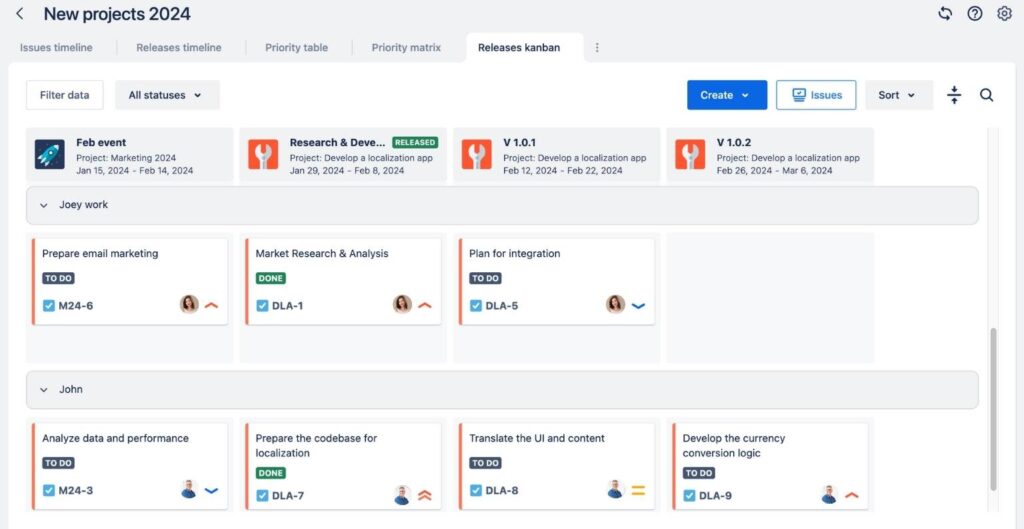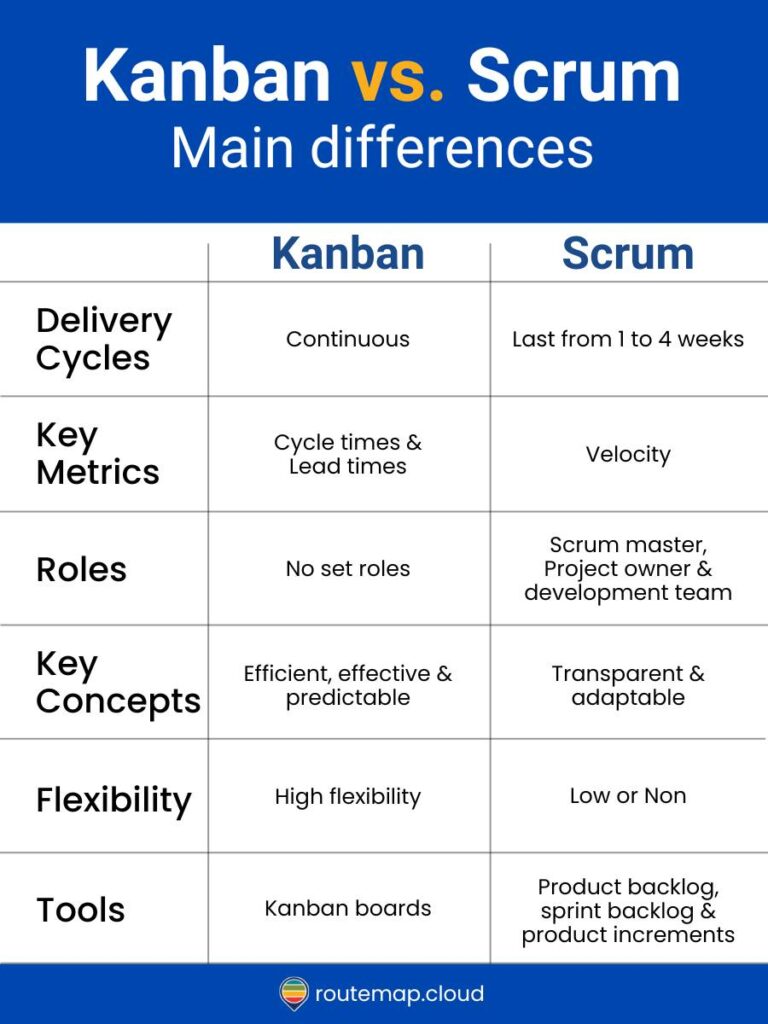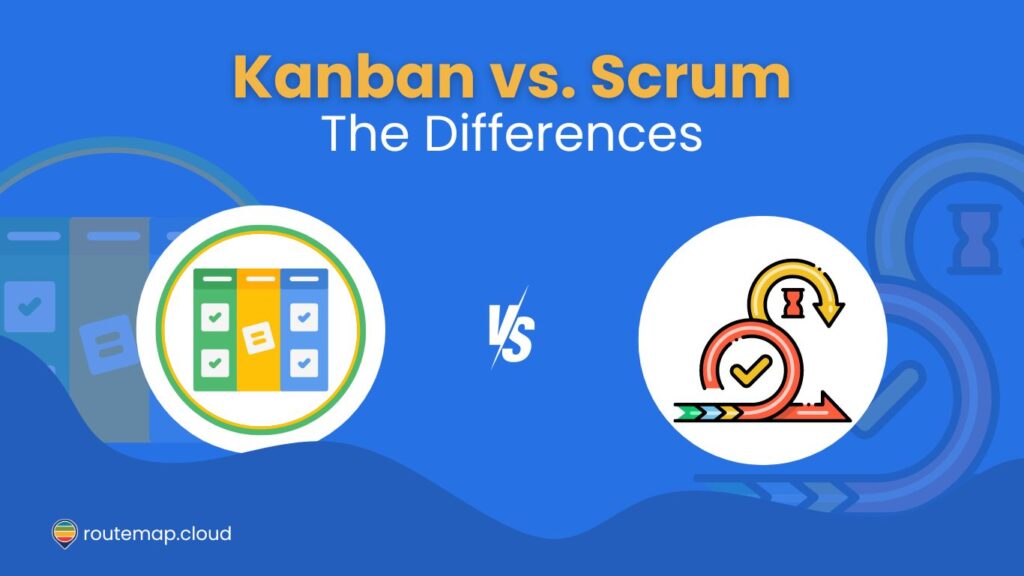Agile methodologies like Kanban and Scrum have become two of the most popular frameworks for delivering value efficiently in project management. While both methodologies share a foundation rooted in Agile principles and emphasize iterative, incremental progress, they differ significantly in their approaches.
That is also the reason why the debate Kanban vs. Scrum has long been started without meeting its end. While each has different advantages, disadvantages, and use cases, which methodology should you choose?
In this article, we’ll explore the similarities and differences between Kanban and Scrum, providing insights into when to use each framework.
Table of Content
What is Kanban?
Kanban is an Agile methodology to visualize and track tasks, manage workflow, and reduce inefficiencies in a project. The concept was later adapted for knowledge work, particularly in software development, becoming a popular methodology for visualizing workflows and managing tasks efficiently.

Additionally, it functions on a system where tasks are ‘pulled’ from the backlog into a steady workflow. And at its heart is the Kanban board. It is a visual tool using cards and columns to visualize tasks and divide project phases.
Kanban has proven to bring great benefits to project management such as increasing transparency and visualizing tasks with simplicity. Ultimately, this Agile methodology makes it easier to delegate resources and create a centralized platform for better communication.
For more information, please visit What is Kanban methodology?
What is Scrum?
Like Kanban, Scrum is another popular Agile methodology. It is also a project management framework designed to help teams develop, deliver, and sustain complex products efficiently and iteratively.
Moreover, it promotes a disciplined and collaborative approach in a time-boxed period to managing work, emphasizing continuous improvement, accountability, and adaptive planning. This is also known as ‘sprint’, typically lasting from 1 to 4 weeks or commonly 2 weeks.
As a result, Scrum provides teams with predictable delivery through sprints and incremental progress while prioritizing tasks effectively with its adaptability. Additionally, it can enhance trust and alignment across every team member by increasing transparency through defined roles (like development team, product owner, and Scrum master) and daily standups.
Kanban vs. Scrum: Similarities and differences
Before jumping into the comparison between the two methodologies, we should take a look at their similarities.
1. The similarities between 2 Agile methodologies
Both Kanban and Scrum are Agile methodologies for managing projects. They also rely on visualizing workflow management and organizing tasks through different stages like “To Do,” “In Progress,” and “Done.”
Moreover, these Agile methodologies focus on the importance of continuous improvement. Kanban implements regular retrospectives and encourages experimentation to enhance processes while Scrum conducts sprint retrospectives to identify ways to improve future sprints.
Not only that, collaboration is crucial in both frameworks. Cross-functional teams work closely together in Kanban and Scrum to deliver value effectively.
They also incorporate limiting Work in Progress (WIP) to prevent teams from overloading. Kanban uses explicit WIP limits for different workflow stages while Scrum manages WIP through sprint planning and maintaining a sprint backlog.
2. Kanban vs. Scrum: what is the difference
Now, it’s time to take a look at their differences.
In a nutshell, Kanban is a project management framework that utilizes task visualization to organize workflows. Meanwhile, Scrum is a project management framework that guides teams in structuring and managing their work using a defined set of values, principles, and practices.
Here are the main differences of Kanban vs. Scrum:

Kanban vs. Scrum: Pros and Cons
Needless to say, no methodology is perfect. Both Kanban and Scrum have advantages and flaws of their own. Therefore, it is important to compare these methodologies altogether for a more thorough understanding.
| KANBAN | SCRUM |
| Pros: – Visualize tasks in progress more effectively. – Use WIP limits to maintain quality. – Manage the project’s workflow. – Adjust flexibly based on priorities. – Enhance collaboration among team members. | Pros: – Helps teams focus and finish tasks within short sprints. – Breaks complex assignments into smaller and more manageable tasks. – Provides insights about what is happening. – Creates a goal-oriented workflow. |
| Cons: – No strict responsibility makes teams hard to concentrate on priorities. – It can be sophisticated and confusing. – It has no timing parameter. | Cons: – Demands lots of focus. – It can lead to pacing issues if there are slower members. – Requires tons of planning and resource management. – It is not flexible for teams if priorities change mid-sprint. |
How to choose between Kanban and Scrum
Kanban and Scrum have their own benefits and strengths, and it can become difficult to decide which one you should use to manage projects. However, it is up to you to choose the Agile methodology that suits your project the most.
On one hand, Kanban is ideal for teams that handle a steady flow of incoming tasks, such as support or maintenance teams. These teams often deal with tasks that arrive unpredictably and need immediate prioritization.
For instance, IT operations and customer support desks are well-suited to Kanban due to the constant influx of issues requiring quick resolution.
On the other hand, Scrum is best for projects where teams need to build complex products or features that require cross-functional collaboration. For instance, software development and new product launches are areas where Scrum excels due to its structured approach to managing tasks and delivering value incrementally.
Can’t decide from Kanban vs. Scrum?
What if you still can’t decide which methodology to choose from when each of them has something you’re looking for? In that case, why not think outside of the box and go for a hybrid approach like Scrumban?
With it, you can combine the best of both worlds to get one optimal solution to manage your tasks and workflow. It is also especially helpful to teams that need a blend of Kanban’s flexibility and Scrum’s structure.
As a result, this approach is ideal for teams transitioning from Scrum to Kanban or vice versa. Besides, organizations needing predictable delivery and facing fluctuating task priorities can also use Scrumban to combine the best of both methodologies.
Conclusion
Both Kanban and Scrum offer unique advantages tailored to different project management scenarios. Besides, there are cases where Kanban shines in managing continuous workflows and adapting to changing priorities while Scrum excels in others.
At the end of the day, there is no black-and-white answer to Kanban vs. Scrum to decide which methodology outperforms one another. It highly depends on your specific needs and the project’s requirements.
Hence, you can always opt for the combination of both Agile methodologies to get the best performance possible. A hybrid approach like Scrumban or Sprint Kanban can provide the best of both worlds, offering the adaptability of Kanban with the structure of Scrum.
By understanding the strengths and differences of each methodology, teams can select the framework that best aligns with their project goals and organizational culture. Ultimately, they can deliver high-quality products more efficiently.
Related articles:






